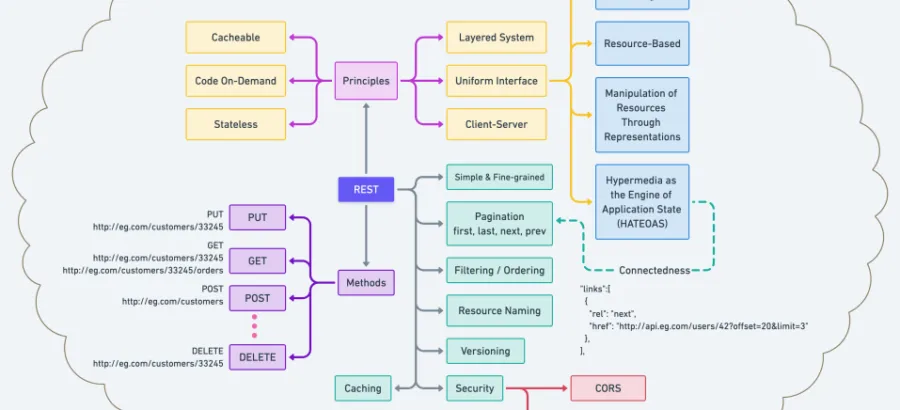REST API Best Practices: Tips for Building Robust and Scalable APIs
In today’s connected digital world, APIs are the backbone of modern applications. RESTful APIs, in particular, have become the go-to standard for building scalable, lightweight, and easy-to-maintain services. But just because you’re using REST doesn’t automatically mean your API is user-friendly or efficient. Whether you’re building your first API or refining an existing one, following best practices can make a huge difference in usability, performance, and long-term maintenance.
Here are some of the most effective tips for building great REST APIs:
Use Nouns for Endpoints, Not Verbs
REST is all about resources, so your endpoints should represent those resources using nouns. For example, instead of /getUsers, use /users. Let the HTTP method (GET, POST, PUT, DELETE) define the action.
Bad: /createUser, /getAllBooks
Good: /users, /books
Stick to HTTP Methods Properly
Each HTTP method has a purpose, so use them correctly:
GETfor retrieving dataPOSTfor creating new dataPUTfor updating/replacing existing dataPATCHfor partial updatesDELETEfor removing data
This creates predictable behavior and helps API consumers understand how to interact with your service.
Use Consistent Naming Conventions
Keep your URLs consistent. Stick to lowercase letters and use hyphens to separate words (not underscores). This makes your endpoints easier to read and understand.
Example: /student-records instead of /Student_Records
Version Your API
Always include a version number in your API path (like /api/v1/). This protects your users when you introduce breaking changes later.
Example: /api/v1/products
Use Proper Status Codes
HTTP status codes exist for a reason—use them. Don’t just return 200 OK for everything. Make your API communicative.
200 OK– success201 Created– successful resource creation204 No Content– success with no return body400 Bad Request– validation or client-side error401 Unauthorized– auth required403 Forbidden– access denied404 Not Found– resource doesn’t exist500 Internal Server Error– something broke on your end
Support Filtering, Sorting, and Pagination
Don’t dump huge datasets all at once. Help consumers get what they need by supporting filters, sorting, and pagination.
Example: /users?role=admin&sort=created_at&page=2&limit=20
This makes your API flexible and efficient for frontend and mobile clients.
Keep Error Responses Clear and Helpful
When something goes wrong, provide useful messages with your errors. Include the status code, error message, and possibly a field for error codes.

Clear errors save developers tons of debugging time.
Secure Your API
Use HTTPS to encrypt traffic. Require authentication (like OAuth2, JWT) for protected routes. Implement rate limiting to prevent abuse, and sanitize inputs to prevent attacks like SQL injection.
Security isn’t optional—it’s essential.
Document Your API
Even a perfect API is useless if no one knows how to use it. Use tools like Swagger (OpenAPI), Postman, or Redoc to auto-generate interactive API docs. Include request/response examples, parameters, and error descriptions.
Good documentation increases adoption and reduces support headaches.
Think About Idempotency
Idempotent operations return the same result no matter how many times you perform them. GET, PUT, and DELETE should be idempotent. This helps in handling retries and avoiding duplicate transactions.
Final Thoughts
Building a clean, maintainable REST API isn’t just about making things work—it’s about making them easy to understand, use, and evolve. These best practices aren’t rules set in stone, but they do set a solid foundation for designing APIs that developers love to work with.
Whether you’re building a public API or something internal, following these tips will help you create a service that’s robust, reliable, and ready for real-world use.






